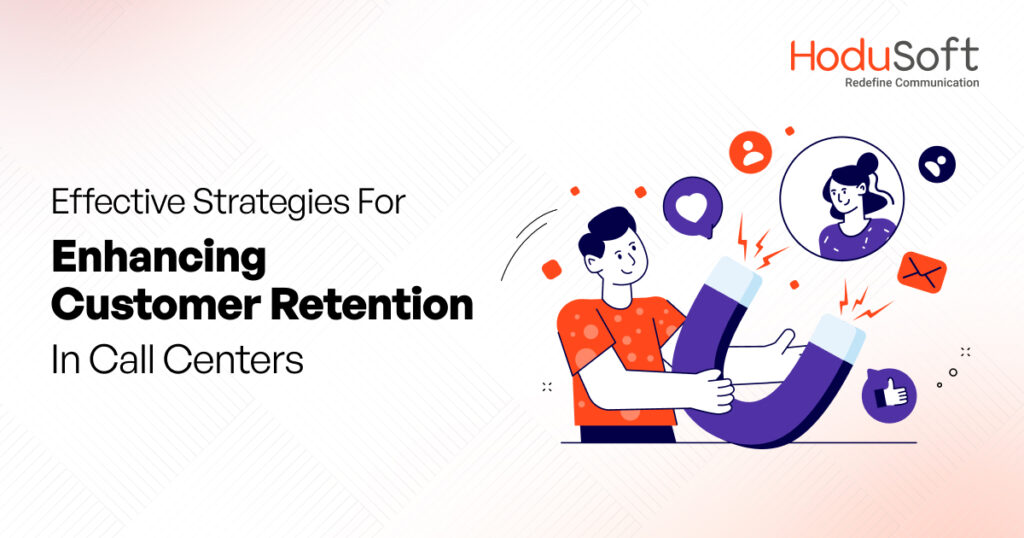What Call Center KPIs You Need to Track to Improve Performance?
To ensure the effectiveness and efficiency of a call center, it is vital to analyze its Key Performance Indicators (KPIs). Everybody including the call center managers, supervisors, or decision-makers is aware of the importance of analyzing call center KPIs. However, they may not be so clear about which call center metrics to measure and track. Here are some of the top call center KPIs that every call center must analyze to improve its performance and track success. Let’s have a look:
Percentage of Abandonment Calls
The abandonment calls rate is the percentage of calls blocked or missed between the IVR and the moment an agent answers the call. The percentage of calls blocked has a large impact on customer satisfaction. It is usually the percentage of inbound callers that receive a busy tone when they make a call. This often happens due to the following reasons:
- No agents are available to take the calls and no queues are configured, or the call queues are full
- The call center software is not efficient enough to handle the call volume
- The routing setup is incorrect
If a call center has low abandonment rates, it generally means that the agents are answering calls quickly. It also means that routing is optimized properly and the team is accurately staffed. The percentage of abandonment call rate is an important call center KPI that should never be ignored. Even a single blocked call can lead to a missed opportunity to connect with a customer or prospect.
Average Response Time
Average response time is another important call center KPI. It gives an impression of your company as to how well you handle clients when they call your customer service. Therefore, it is important to analyze the Average Speed of Answer (ASA). ASA is nothing but the average time taken by agents to answer inbound calls. A low ASA usually indicates less waiting time for customers to reach agents and instant solutions for their queries. Whereas, a high ASA could mean a complex call center process, insufficient staff, or too many administrative tasks.
With the help of predictive dialer call center software, you can improve your call center’s average response time. Also known as an auto dialer, a predictive dialer for call centers helps in:
- Reducing the downtime between calls
- Enhancing the average handling time of call center
- Improving the connection between customer and agent
- Making the calling more result-oriented
In all, call center automation software with features like predictive dialer helps to streamline call flow even during high call volume. Ultimately, it helps in improving the average response time, which is one of the most important call center software KPIs.
Also Read: 6 amazing benefits of auto dialer software for outbound call centers
Average Hold Time
An average hold time is the amount of time that a customer is put on hold during a call. However, putting customers on hold for a long time may lead to an unsatisfied customer experience, stress, and even abandoned calls. If the average hold time is higher, it’s a sign that call center agents are not properly trained. It also shows that the system is slow, scattered, and unreliable. It is important to ensure that the caller’s wait time is within an acceptable range. For this, call centers must keep track of the average time in the queue.
With the help of a multi-level call center IVR system, you can greatly reduce customer hold time. Setting up your IVR in an intuitive manner can help in:
- Directing callers through the prompts quickly
- Sending callers to the right queue
- Minimizing the waiting time in the queue
It is also important to empower your call center agents to handle and monitor their queues. Encourage them to take all the necessary actions that improve their KPIs.
Level of Service and Customer Satisfaction
Service level can be defined as the percentage of calls answered within a specified time frame. Calls that are answered within the defined time are said to meet the service level. As per a report, about 68% of consumers are willing to pay more for products and services from a brand known to provide good customer service experiences.
By offering multi-channel support using inbound call center software, call centers can reduce the volume of inbound. How? Well, they can offer support via chat, email, FAQs, self-help guides, and more. This way, the agents can concentrate more on handling important calls to improve service level. Another key KPI is customer satisfaction, which can be acquired from various sources. Using outbound call center software, call centers can analyze customer satisfaction by conducting customer surveys as well as by obtaining quality assurance measurements. Using the right software can help in:
- Meeting customers’ expectation
- Reduce customer churn rates
- Improve the brand’s reputation
It is important to implement measurable service level targets so that necessary actions can be taken on time.
Conclusion:
To run a call center to its optimum ability, it is vital to take the necessary steps to enhance customer satisfaction levels and reduce call waiting time. Tracking call center KPIs allows businesses to tackle their areas of improvement. On the other hand, it helps in maintaining the areas that are performing successfully. By analyzing the key KPIs, businesses can reduce running costs, improve staff performance, boost their reputation, and achieve better ROI.
Implementing the most reliable call center software can help you meet and even exceed customer requirements. HoduCC Call Center Software is one such system that offers the best call center software solutions for different types of businesses. Considering the specific business needs, HoduCC offers both single-tenant call center software and multi-tenant call center software options. For more details, connect with HoduSoft professionals today.



